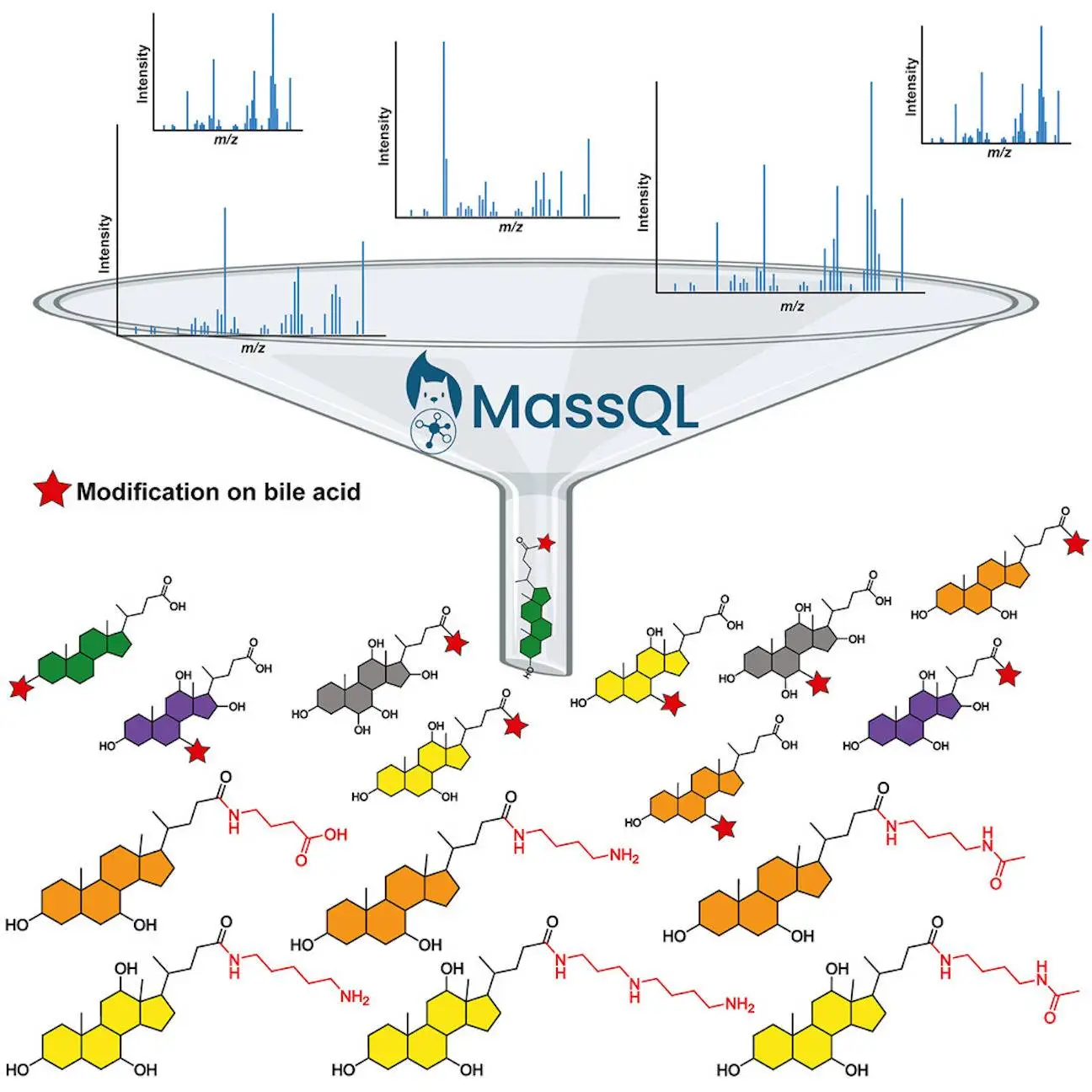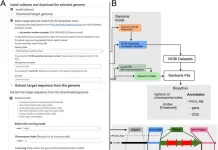Bile acids, simple molecules that live in our intestines, have long been relegated to the role of digestive workhorses, faithfully emulsifying fats for absorption. However, recent scientific revelation is rewriting the story, revealing a complex hidden world within these seemingly simple compounds. This new recognition stems from the discovery that bile acids make a remarkable difference in the hands of our gut microbes—a symphony of changes that infuses them with a surprising array of potential health benefits.
This blog dives into groundbreaking research that escapes in light of this underappreciated diversity of bile acids. With the help of this research, we can explore how our gut microbes orchestrate this complex chemical choreography and present a powerful tool scientists have developed to unlock the secrets of these modified bile acids.
The Mighty Bile Acids: Beyond Digestion
Bile acids, synthesized in the liver from cholesterol, are essential for a healthy digestive system. They emulsify fats and help their breakdown and absorption. However, their impact extends far beyond the gut. These act as signaling molecules that interact with receptors throughout the body and influence functions such as metabolism, immune response, and even brain health.
The discovery that the microbes living in our gut can significantly alter bile acids has opened an exciting new chapter in bile acidic research. These microbial modifications, mostly through amidation with amino acids, create a diverse array of modified bile acids with potentially different biological activities.
Untapped Potential: The Challenge of Discovering Modified Bile Acids
Although the importance of modified bile acids is evident, full characterization of this diversity remains a challenge. Traditional methods are often based on culturing intestinal bacteria with bile acids, which may not provide a complete picture of what is happening in the complex intestinal ecosystem. That’s where a new study comes into play.
A Game-Changer: The Bile Acid MS/MS Spectral Library
The researchers behind this study took an innovative approach. They harnessed the power of publicly available tandem mass spectrometry (MS/MS) data, a technique for identifying molecules based on their fragmentation patterns. By developing an advanced tool called Mass Query Language (MassQL), they were able to filter this vast set of data based on patterns characteristic of bile acids.
The result? A unique reusable bile acid MS/MS spectral library. This library serves as a benchmark containing diagnostic fragmentation patterns of various known bile acids and their variants.
Unlocking the Secrets: How the Library Works
Imagine a detective with a library of fingerprints (fragment patterns) of known bile acid suspects. Now, researchers can compare the MS/MS spectra of unknown molecules in metabolomics studies with a library. If a match is found, it indicates the presence of a modified bile acid!
The library offers tremendous opportunities to accelerate bile acid research.
This can help:
- Finding new bile acid modifications: By comparing unknown MS/MS spectra with known patterns, researchers can identify previously unnoticed modifications.
- Understanding biological roles: The presence of certain matches can provide clues to possible biological functions of the modified bile acids.
Testing the Library: Discovery of Polyamine Galamidates
The researchers continued creating a library. They demonstrated their power by showing that bile acids were found amidated with polyamines in this context, which had not been described before. By confirming the findings with synthetic standards and stool samples, they confirmed the presence of these new bile acid variants.
Limitations and Considerations: A Road Map for Future Exploration
While the library is a significant step forward, it is important to recognize its limitations. The library is likely to cover all possible modifications, and some observed structures may not be true bile acids but structurally similar molecules. Additionally, the number of specific changes may vary, and the occupancy settings of MS/MS standards may remain sparse.
These limitations provide opportunities for future research. Expanding MassQL queries and fine-tuning data capture strategies can help capture an even wider range of changes.
Beyond Bile Acids: A Broader Impact
The workflow presented by researchers holds promise in addition to bile acid studies. The study indicates the high selectivity of MassQL queries for bile acid spectra. By adapting the approach and tailoring the MassQL queries, researchers may be able to explore variant diversity in other important classes of metabolites.
Conclusion
There is much more to learn about the variety of bile acids and associated steroid lipid changes in microbial and host metabolism. Animals and humans have thousands of alterations inserted into their bodies and microbial cultures. Researchers work uniquely focused on resource creation that allows the discovery of modifications to bile acids and related cholane structures. This highlights the underestimated chemical diversity of bile acid transformations and provides the research community with a reusable MS/MS spectral library for future targeted metabolic experiments. Researchers filtered 1.2 billion publically accessible tandem mass spectrometry (MS/MS) spectra based on bile acid selective ion patterns to close this data gap and produce a reusable library of MS/MS spectra. Their study revealed that repository-scale searches can be used for the discovery of molecules. The resource will accelerate the discovery of unknown bile acids and their biological associations. The freely available MS/MS spectral library and associated MassQL queries are valuable tools for researchers studying bile acid transformations. By gaining a critical understanding of library limitations, researchers can unlock a wealth of knowledge about the hidden world of bile acids and their potential effects on health and disease.
Researchers highlighted the importance of using publicly available large-scale metabolomic data to reveal metabolites and many more bile acid changes than previously thought. The future availability of a modification-centric bile acid MS/MS library will facilitate the study of the significance of bile acids in health and disease. We may expect to discover some intriguing new information as we examine the many changes brought about by the complex interactions between bile acids and our gut flora, which will modify our understanding of these essential substances and their impact on our health.
Article source: Reference Paper
Follow Us!
Learn More:
Anchal is a consulting scientific writing intern at CBIRT with a passion for bioinformatics and its miracles. She is pursuing an MTech in Bioinformatics from Delhi Technological University, Delhi. Through engaging prose, she invites readers to explore the captivating world of bioinformatics, showcasing its groundbreaking contributions to understanding the mysteries of life. Besides science, she enjoys reading and painting.
















